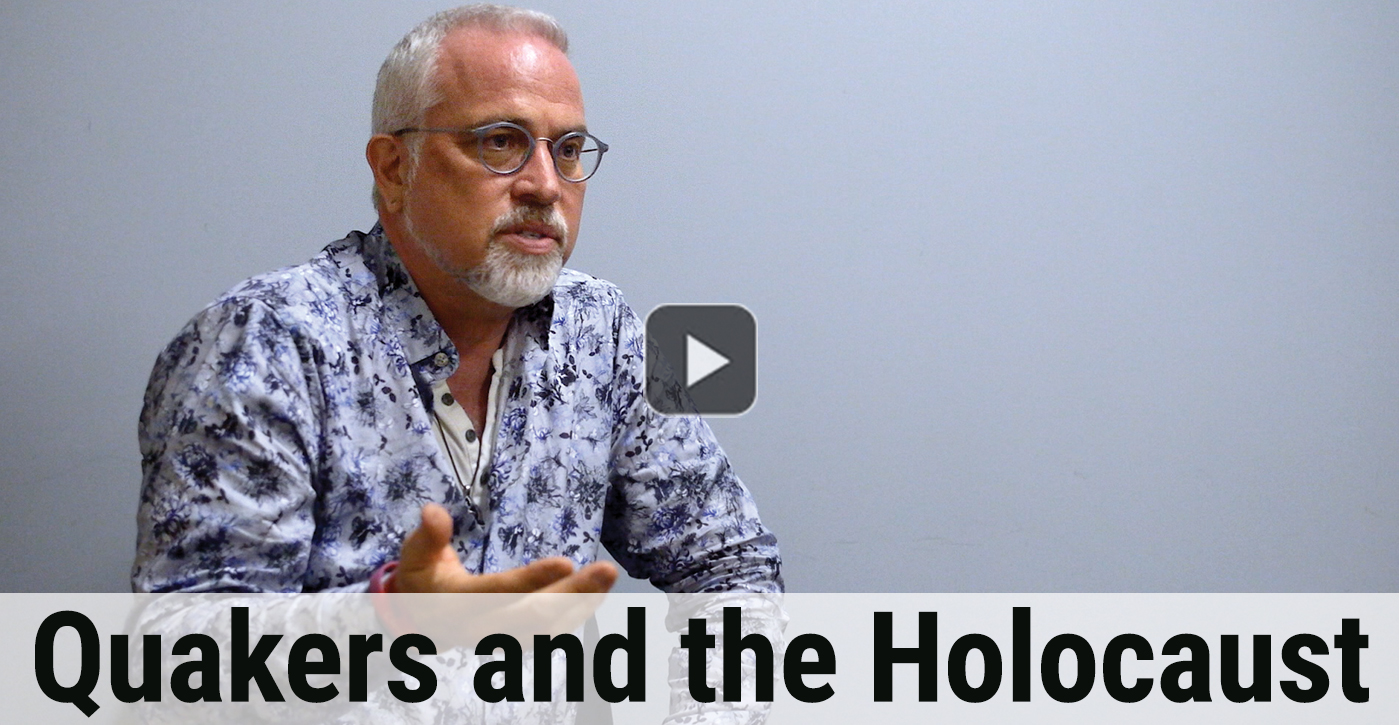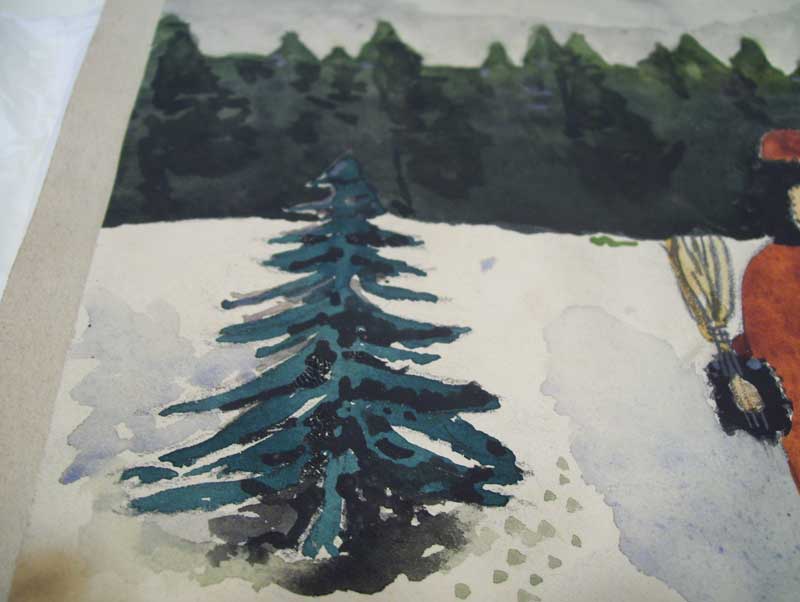At the end of the 17th century, groups of German Quakers migrated to North America, leaving only very small, scattered groups of Friends in Germany.
After World War I, however, Quakerism returned there when Friends from abroad came to play a part in the recovery from the ravages of war. Subjected to the blockade of the victorious powers during and after the fighting, the civilian population of Germany suffered from severe hunger. At this time the Quaker aid organizations set out to organize transports of food for Germany. In doing so they followed the principle that every person in need has to be helped, whether friend or foe. In England, this earned the Quakers the hostile label of "Hun-lovers." In Germany, children were most seriously at risk of starvation. In 1920 English and North American Quaker aid organizations started a feeding program for children. Every day in school up to a million German children received a warm meal and some bread and milk. This saved them from undernourishment, illness and death. Quäkerspeisung—"Quaker food" —became an established expression in Germany. The shipping label for the school food bore the following note: "To the children of Germany! A friendly greeting brought to you from the Religious Society of Friends, which for 250 years, and even during the recently ended World War, has adhered to the principle that only love and the desire to help, rather than war and violence, can bring peace and happiness to humanity."
The feeding of the children made some Germans curious to find out about the Quakers. "But taking to the streets and proselytizing, that we don’t do. It’s not our way," Gisela Faust, an 85-year-old German Quaker, says emphatically. Even without missionary activity, enough people felt attracted by Quakerism so that in 1923 the Religious Society of Friends in Germany was founded. With a few hundred members in all of Germany, this always remained a very small group—but it was extremely active and achieved many things.
It was above all during the years of National Socialism that the Quakers stood up for the rights of the persecuted. The Quaker community in Germany had always been international. In its Berlin office Germans worked side by side with U.S. and English citizens. As the repression of Jews and the Nazis’ political opponents worsened, U.S. Friends were able to visit persecuted persons in prisons and to negotiate easier conditions or even releases. In the concentration camps many prisoners perceived a last glimmer of hope if their case was known to the Quakers.
Although the international Quaker office in Berlin had been an important place of refuge for the persecuted ever since 1933, the situation took a dramatic turn for the worse after the night of the pogrom (Kristallnacht) of November 9, 1938. As Gisela Faust reports, "After that, people stood in line in front of the Quaker office near the Friedrichstrasse station, because everyone realized that the only hope was to try to emigrate at the last minute." The international Quaker office in Berlin worked on behalf of Jewish people who were not affiliated with a Jewish congregation, and also some of the political refugees. They were able at the last minute to evacuate ten thousand Jewish children to England in the so-called Kindertransporte. Quaker families in England and the United States took in the children.
Once the war started, it became totally impossible for the Quaker office to help the persecuted escape. The English workers at the office had to leave Germany at the beginning of hostilities, and the U.S. workers left when the United States entered the war. Now only the German office workers were left, but their possibilities for providing help were extremely limited.
Some of the Quakers secretly hid Jews. For resistance fighters of all stripes also the "Friends" were important contact persons because of their impartiality and their discretion. A number of them were arrested by the Gestapo and paid with their lives. It is astonishing to note, however, that as an institution the Quakers were never outlawed. The Protestant pastor Franz von Hammerstein lists the possible reasons for this: "The Quakers were trustworthy. Their readiness to help, and help even people who were not actually their friends, left a great impression and smoothed paths— even with the Nazis. Not only did they not send the Quakers to the camps but astoundingly allowed them to keep working." Many Nazis remembered the Quakers from their childhood and the program of feeding the children. This now protected the Quakers. In addition they were seen as a possible bridge to foreign contacts. This is why the German Foreign Office successfully argued for the continued existence of the Religious Society of Friends.
And indeed, the Quakers built new bridges after the war and provided important impulses to German postwar society. In some German cities Quaker aid organizations founded neighborhood centers, we are told by Hannelore Horn, for many years head of the League of German Neighborhood Centers. "The idea was to create a democratic cell where people of different generations could come together and test their ideas. After 1945, it was something totally new that one could get involved there and have an input in decisions. This was bound to appeal greatly to a young person like myself."
The neighborhood centers in Frankfurt, Cologne, Wuppertal, Wiesbaden, Braunschweig, and Berlin developed into important centers of cultural endeavors and communication far beyond their neighborhoods. Especially important was the neighborhood center Mittelhof in Berlin, which became a conference center that afforded a forum for East- West dialogue, as well as for efforts at reconciliation between Germans and Jews.
Understanding their engagement in postwar Germany as sustained peace activism, the Quakers also influenced other initiatives. The traditional Quaker youth workcamps inspired the peace activities of the group Action Reconciliation (Aktion Sühnezeichen). Quakers helped organize the Easter marches of the West German peace movement and supported the right to conscientious objector status in both East and West. In East Germany— the German Democratic Republic (GDR)—the Quakers, together with other churches, lobbied the government for regulations concerning alternative service. Although it proved impossible to establish a civilian alternative service in the GDR, the law providing for a corps of construction workers (Bausoldaten) did create a possibility for refusing immediate armed service. No other nation within the Warsaw Pact adopted this regulation.
Since many Communists had received help and protection from the Quakers during the Nazi period, the rulers of the GDR tended to trust the Quakers. They were sought-after mediators between East and West and often able to help with humanitarian issues. As a small religious community counting 50 members, they did not represent a serious challenge to the socialist State, but this small size was precisely what afforded the Quakers possibilities of action where the major churches of the GDR had no room to maneuver.
The Quakers’ peace work also takes place on a smaller scale. In the 1970s U.S. Quaker and Mennonite congregations developed programs for solving conflicts in neighborhoods. These were followed by programs for the prevention of violence in schools. Conflict counseling in concrete situations eventually evolved into a method: mediation. Quaker Jamie Walker is a pioneer among mediators. "Out of our pacifist tradition we start very early to teach children how to resolve their conflicts without violence. Human beings can learn freedom from violence. It is a matter of developing abilities and acquiring knowledge."
Jamie Walker has experienced this development in the United States. In the 1980s she began to offer mediation training in German schools. By now, mediation has grown beyond the school. It is used in divorces, conflicts in the work place, or in explosive social situations in cities, where communal mediation is called upon to defuse conflicts.
Even though today there are only about 280 Quakers in Germany, this small religious community has again and again given German civil society lasting new impulses. Yet the Friends never made much fuss about their work and have never used it to proselytize. Thus the size of the Quaker community in Germany is like an extended family. The German Friends do not expect a mass influx. They are used to being a small religious community and to practicing their faith in service to society. For Jamie Walker, never to lose one’s optimism is an essential tenet of Quakerism; it informs her day-to-day work and sustains her. "I have an underlying confidence that what I do will have an effect. I never have any doubt about that. If I stick with it, it will lead to something."
—————
This article is an excerpt from a longer German-language article, "Der Himmel ist in dir" ("God Is within You"), which appeared in Publik-Forum, D-Oberursel, Ausgabe 20/2008). This exerpt was translated by Elborg Forster, a freelance translator of academic texts, who lives in Broadmead Quaker retirement community in Cockeysville, Md. Sonia Blumenthal, who attends Gunpowder Meeting in Sparks, Md., brought this article to our attention.



